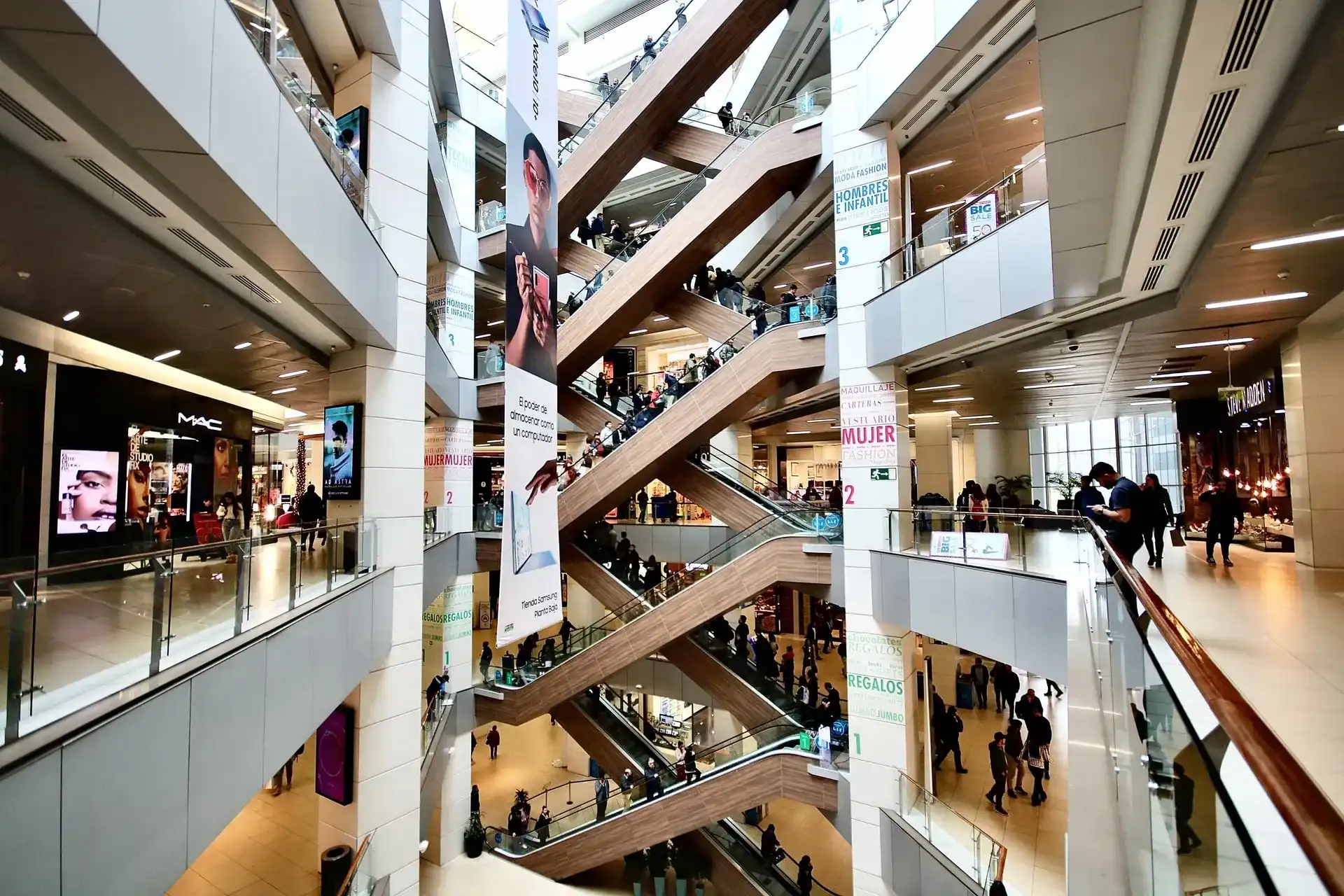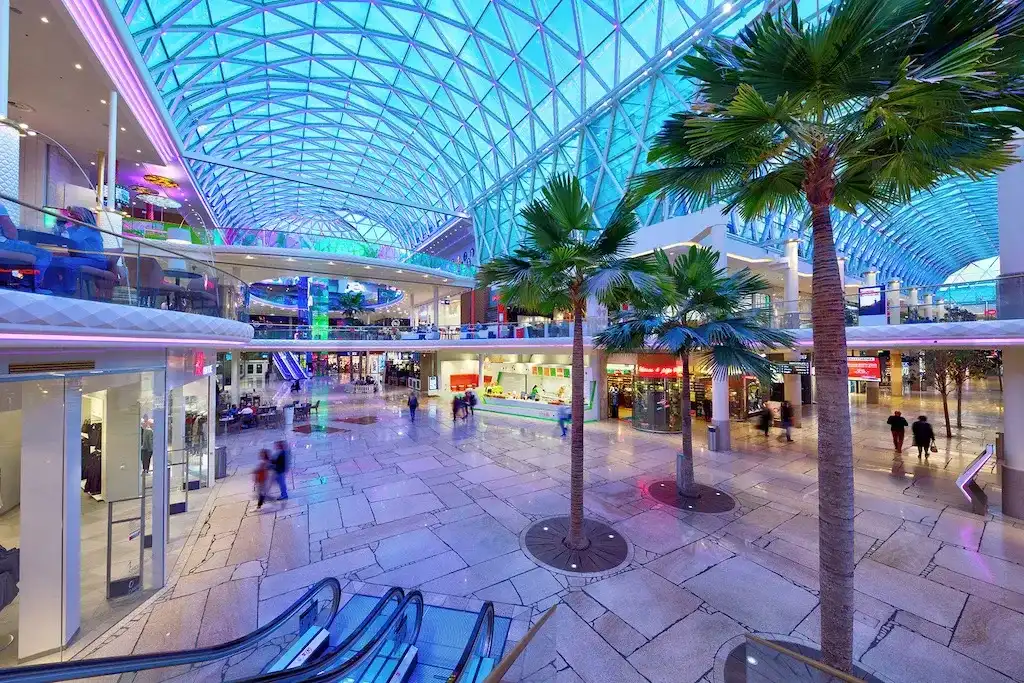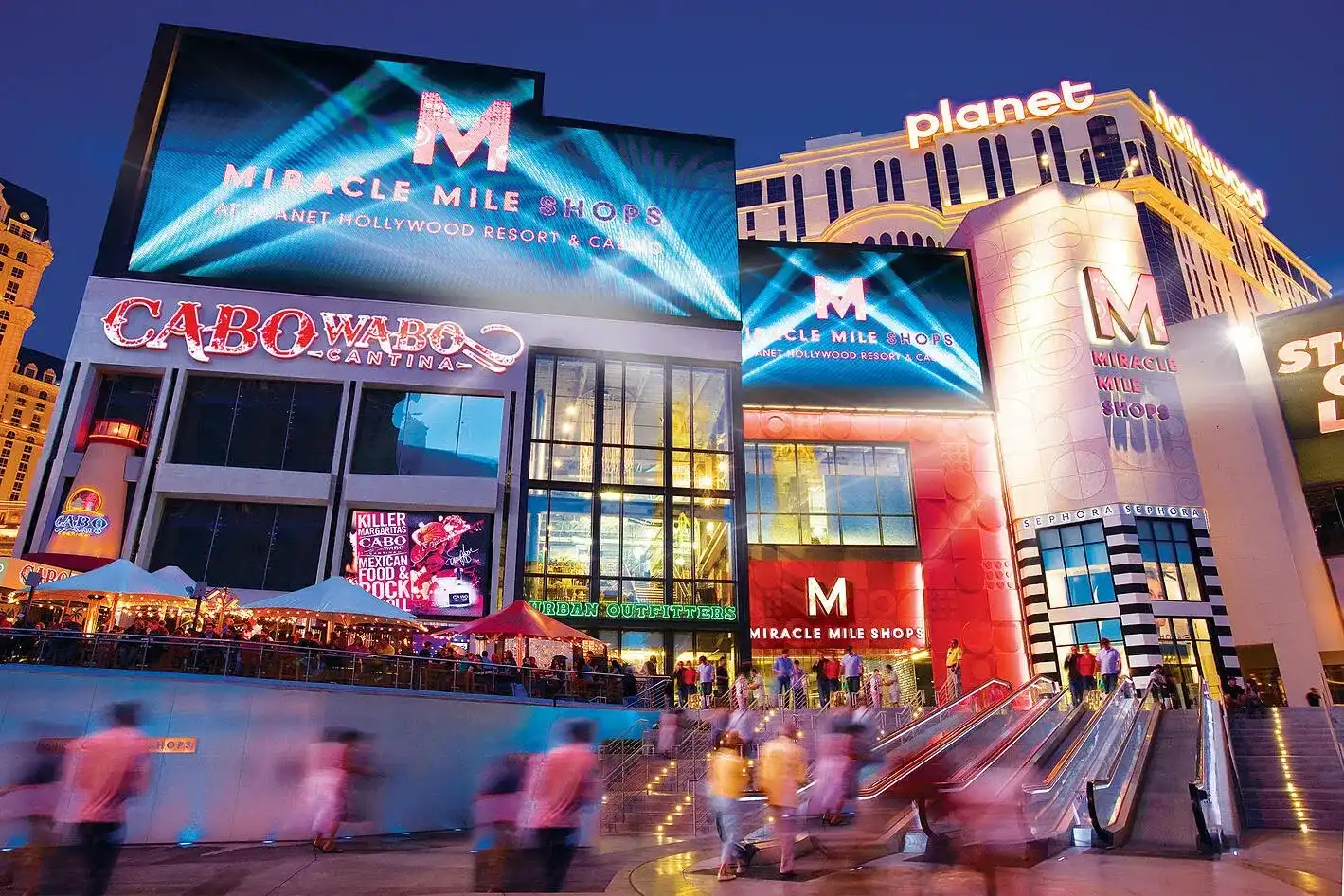Start Here
Location-based marketing for shopping malls uses proximity technologies such as beacons and Wi-Fi to deliver personalized, real-time messages and targeted offers to shoppers based on their indoor location, with 89% of marketers reporting sales as the top advantage. This strategy enables mall operators to send relevant notifications when customers are near specific stores or during low-traffic periods, creating cross-channel experiences that connect online and offline behaviors while competing effectively against e-commerce. Leading shopping centers, such as Simon, Tanger, and Hudson Yards, leverage platforms with blue dot navigation and analytics to build digital maps that enable targeted marketing and provide data-driven insights into visitor movement patterns and demographics.
Your guide to location-based marketing for malls. What is it, how does it work, getting started with this strategy, and how Mappedin can help.
What is location-based marketing?
Location-based marketing (or proximity marketing) is a tactic that utilizes a person’s physical location to target them with personalized messages. Using past and real-time location data, marketing teams can reach consumers based on qualifiers such as proximity to a store, events happening within their area, and more. An example of a common location-based marketing strategy is sending real-time mobile notifications (e.g. a personalized offer) to visitors through an app or mobile service when they are within a certain distance of the store (this is also commonly known as a geofence).
How does location-based marketing work for shopping malls?
Shopping malls can use available indoor positioning including beacon technology, wi-fi, RFID, and geomagnetic, to understand this real-time position as people navigate the indoors. There are two key requirements to have a functional and successful location-based marketing strategy. The first is an understanding of a user’s current location through positioning layered with a digital venue map, and the second is that users must opt-in to receive notifications and have location services enabled before businesses can send promotional alerts and messages.

Why location-based marketing is important for retail?
Location-based marketing is being used effectively as a powerful strategy for retail marketing teams to increase user engagement and customer retention through discovery and brand awareness campaigns. Driving relevant and timely location-based campaigns allows businesses to capitalize on the current buying stage of their target audiences. Businesses in the retail sector are constantly looking for an advantage over their competitors and are finding ways to send personalized offers and content to improve the customer experience.
Why shopping malls should use location-based marketing
Improve revenue with relevant location-based messaging. Generic messaging can be a turn-off if it is irrelevant to a customer. Personalized location-based messaging can not only hyper-target a segment or demographic, but it can also convert on customer needs to make a sale. For example, retailers can provide scannable QR codes or discount codes to nearby customers that are an additional incentive to purchase and drive loyalty.
Shopping malls have tremendous amounts of foot traffic, often following predictable patterns around holidays, weekends, or special events. Location-based marketing can help to increase foot traffic for retailers inside malls during hours of less traffic by informing visitors nearby with targeted offers, special offers, or personalized messaging.
Retailers often use location-based marketing to create a better user experience by targeting customers when they are likely to purchase or require products and services. Campaign timing and distribution both play a vital role in only serving relevant messages and notifications at a time when it is most impactful.
Advantages of location-based marketing for shopping malls
There are many advantages of using location-based marketing for shopping malls. Mall operators and marketers who use a location-based marketing strategy have shown that it positively impacts their business. In a survey done by Statista, 89% of marketers say the top advantage of using location-based marketing is sales. For many shopping malls and brick-and-mortar retailers, competing with online retailers is a reality and any advantage to capture sales from visitors is beneficial.
In a shopping mall, retailers can use proximity marketing to notify nearby shoppers about in-store events or promotional deals. Another strategy that retailers can deploy is to target shoppers who are browsing a competitor’s store. A sports apparel store, for instance, can send an alert to those who enter a competitor’s store on the other side of the mall to let them know there is a 20% discount campaign that is currently available to them.
Creating a cross-channel experience will create a more coherent customer journey. Proximity marketing has been proven to create a real-time connection distributed through cross-channel experiences. With the correct timing and setup, campaigns can be delivered to your customers that allow them to interact at the right time. By better understanding the customer journey, retailers can connect the online and offline behaviours to understand purchase patterns and attribution measurement.

How shopping malls can effectively use location-based marketing
Shopping mall operators can effectively use location-based marketing by choosing strategies that make sense to the types of customers and retailers they have.
According to research by The Next Web, 42% of consumers feel that mobile marketing messages targeted toward them are not relevant enough. Greater efforts should be made to understand consumer behaviour to ensure that relevant messages are being delivered when they are within a defined geofence.
Digital maps are now commonplace in shopping malls and can often be found on digital directory signage, the mall’s website, or shopper mobile applications. While these mapping solutions provide shoppers with easy-to-use A to B wayfinding. Paired with blue dot navigation and proximity marketing, it takes the customer experience to the next level.
Knowing where your customer base is shopping indoors can have major benefits. It allows mall managers and retailers to engage with customers through a variety of digital marketing channels that serve store-related content based on consumer offers. In addition, social media stories are an excellent and cost-effective way to promote brands, event updates, and real-time or limited-time offers. Marketing teams who monitor mentions through a social media feed can also provide customer service and respond to feedback quickly.
How to launch a location-based marketing campaign for shopping malls
There are several ways shopping mall retailers can launch a location-based marketing campaign. Here are just a few examples.
Keep up with consumers. Customers are constantly moving and catching them at the right moment is challenging. Location-based marketing can be used to connect with customers who want to receive real-time push notifications, alerts, and emails. Also, it allows them to verify that they are in-store and claim offers as a user begins shopping as they enter a retail store. Later in the journey, retailers can run retargeting campaigns to close the customized experience loop.
Hyperlocal marketing. When your target audience enters a very limited geographic area, trigger messages that are extremely relevant. One area may have different demographics than another area of the same city or region. Customers appreciate extremely relevant, targeted marketing messages, and special discounts.
Utilize smart spaces. Beacons, wi-fi, and other indoor positioning technology platforms allow retailers and individuals to engage through interconnected networks. Being able to push relevant ads or offers for products while a customer is in-store is becoming more commonplace. Customers rarely go shopping without their mobile devices and when they receive relevant messages based on their interests, customer loyalty tends to increase and stay strong.
How to choose the best location-based marketing system for shopping malls
Many platforms provide location-based marketing for retailers in shopping malls. These platforms identify when a prospective or existing customer is within predefined proximity or geofence and triggers the delivery of personalized, contextual marketing content to their mobile device. To best determine which location-based marketing system can be used, retailers must find a product that:
- Identifies a target audience (or potential customers) within specified geographic boundaries through the use of geofencing, wi-fi, beacons, or a similar geotargeting technology
- Provide a platform that includes communication tools to deliver scheduled, targeted, and automated messages based on their location
- Provide analytics or a dashboard to analyze proximity-based marketing campaign metrics and performance
- Allows customers to opt-in and out of marketing communications and updates distribution lists automatically for the Marketing team
What sets Mappedin apart?
Mappedin is trusted by major retail shopping centers such as Simon, Tanger, and Hudson Yards, which are leading the way by increasing customer engagement and customer satisfaction using digital directories, indoor mapping, wayfinding, and analytics.
The Mappedin platform enables shopping mall operators to build fully customizable and editable digitized maps. To implement location-based marketing strategies, one of the first steps is to create a visualization of the retail space. By combining precise location data and a digital map, retailers can better understand foot traffic, how people move through a particular space, as well as how to use this information to improve the customer experience. We previously covered some key things to consider when choosing an indoor mapping provider.
There are three key components required to build a proximity marketing experience: the advertising content, positioning, and the digital map. Mappedin’s blue dot navigation feature takes care of the second piece for marketers hoping to target customers indoors.

Location-based marketing for shopping malls FAQs
With almost a decade in the indoor mapping industry, Mappedin is the ideal partner for your digital wayfinding needs. We can help you develop dynamic, interactive experiences that delight your customers while building a digital indoor mapping foundation that can grow with your business. Here are some common questions that we receive from potential customers as we navigate through the retail landscape.
How to leverage location-based marketing?
Shopping malls can leverage location-based marketing by analyzing data from a range of integrated digital tools to find insights into visitors and to offer them a personalized experience to their shopping behaviours. Some questions that could be answered:
- What demographic are they?
- When do they visit?
- What are their favourite stores to shop at?
- Are they subscribed to your newsletter?
Many marketing and retail leaders often find it challenging to leverage the right location-based marketing strategies. It is important to focus on a solution that:
- Increases customer experience
- Stays relevant to your customers and is scalable over time
- Uses communication channels effectively, whether it is through social media, email, or mobile notifications
- Has mass appeal but can still focus on segments important to the retailers in your shopping mall
How do you market a shopping mall?
Shopping mall marketing and operation managers face the daily challenge of traffic flow. Shopping malls are facing competition from other retail centers and online shopping and online delivery services. There is no single solution to improve traffic and involves several strategies to work together. Shopping malls must embrace marketing strategies to differentiate and optimize their space to be customer-centric and provide a level of customer service that a consumer cannot experience in the comfort of their living room.
How is location-based marketing implemented?
The location-based marketing for a shopping mall can is often created as part of an overall marketing plan that encompasses several tools and smaller strategies together. Part of it is to integrate a user engagement platform to segment users, create campaigns, and define geographic boundaries. Incorporating location-based marketing requires an investment in different technologies, from marketing expertise to indoor mapping and more. An indoor mapping provider is your best bet for optimal results. They’ll have the expertise necessary to create and automate your indoor maps, as well as integrate your existing software tools and APIs with their mapping solution.
Assess your needs as well as the needs of your customers. You’ll also want to think about the different wayfinding options that may be relevant to your business, from interactive help kiosks to QR code scanners to even SMS marketing. Technology such as blue dot wayfinding can be used in conjunction with other location-based technology to provide an enhanced shopping experience. Mall managers and retailers alike can review location insights and analytics to gain a better understanding of how visitors move through your property and ultimately improve the wayfinding and digital directory experience for visiting customers. Contact us today to learn more.
Share




